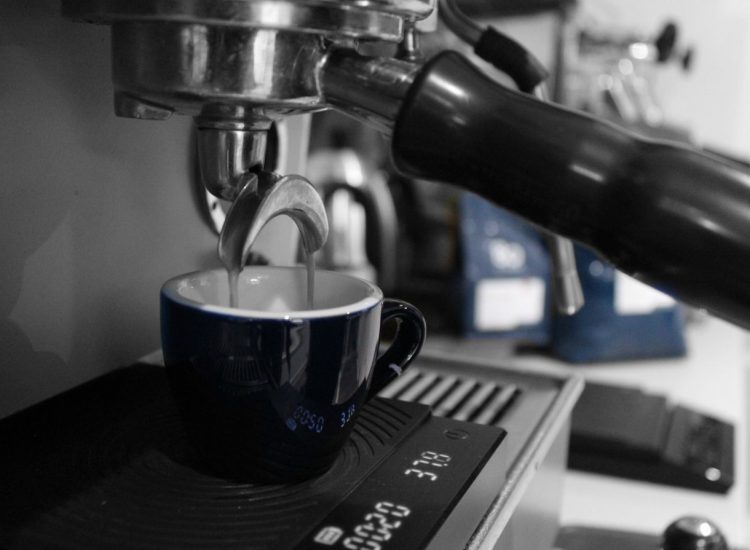
AT A GLANCE
COFFEE – 18g
WATER – 38ml [94°C to 95°C]
—
0:00 – BEGIN
0:07 – FIRST DROPS
0:27 – FINISH
INTRODUCTION
Around the late 19th century, the first espresso machines were being invented, utilising steam from boilers to create coffee faster than ever before, but it was not until Gaggia’s first machines that people were able to surpass the 2 bar pressure threshold, using levers to generate pressure with which water could be forced through finer coffee grounds, creating a denser, thicker, and stronger beverage than ever before, but the result would still be unrecognisable as what we now call espresso. It wasn’t until decades later that moterized pumps began to be used, culminating in the 1961 Faema Espresso machine, which set the benchmark of modern espresso for years to come, resulting in the machines we know and love today. Not only have the technologies developed, but so have our techniques.
This recipe is our go-to recipe for most of our blends, it is designed to retain the body and strength of classic espresso, and work great black or with milk. We use a La Marzocco Linea Classic at our roastery with 21g VST baskets, but any model can work for this recipe.
METHOD
What you’ll need
The method should alter slightly depending on your equipment. Listed here is what we use on our machine and should be used as a reference
- Espresso machine
- 18g coffee
- Grinder
- Tamper
- Scale/Timer
- Distribution tool / WDT (optional)
- A cup
Steps
Ensure your machine and porta-filter has had time to preheat before use, and that it is flushed through.
- Set your machine’s boiler temperature to 94°C– 96°C, depending on the coffee (if possible).
- Grind your coffee to a fine setting.
- Add the coffee to the clean pre-heated porta-filter. The coffee dose should be altered to match your basket size, if necessary.
- Distribute the coffee bed.
- Give the coffee a level, even tamp, that is firm but not too hard (around 8kg of force).
- Carefully load the portafilter into the machine to avoid damaging the coffee bed, or the equipment.
- Add the scale to the drip-tray, place the cup on top, and tare it.
- Start the extraction on your espresso machine.
- Stop the extraction when a target yield is reached. We aim for a yield of between 32ml and 38ml, this should come out in around 25 seconds.
- Remove the cup, empty the portafilter and clean it. Serve and enjoy.
How to adjust
- Keep your tamp consistent. You can experiment with different tamp pressures, but when starting out, it is a good idea to keep it constant, so you can experience the effects of other adjustments first, we recommend a slightly lighter tamp of between 8-10kg, for reference, but don’t over think it, firm but no too hard.
- Adjust grind size to taste not time, espresso shots should usually come out between 20 and 30 seconds, however on low-pressure domestic machines it may be longer, but obsessing about numbers wont necessarily create better coffee, instead, try the coffee first, if it is salty, sour, or too acidic, then make the coffee finer, if it is bitter, or too heavy, or not acidic enough, make the coffee coarse.
- If you are able to adjust the temperature on your machine, you can use this to adjust the taste too: hotter temperatures will create sweeter brews, and lower ones will generate a more acidic cup.
- Adjusting dose depends on the size of the basket on your porta-filter: as long as you are within about 2 or 3 grams variation either side of the dose recommendation, you should be okay. Increase your does to get more body and a stronger cup, or decrease the dose to get a lighter, softer cup. The amount of liquid output (yield) is also worth considering, even if you maintain the same coffee dose and alter this instead.

This section is for those who want to go all in. It provides the extra details regarding our method, as well as the results we get when brewing, and are to serve as both guidance, and reference for those who want it.
Grind: 200μm – 300μm
Yield: ≈35ml
TDS: 11%
EY: 20.3 %
Water content
pH: 7.0
PPM: 115
Speciality Coffee Suppliers












